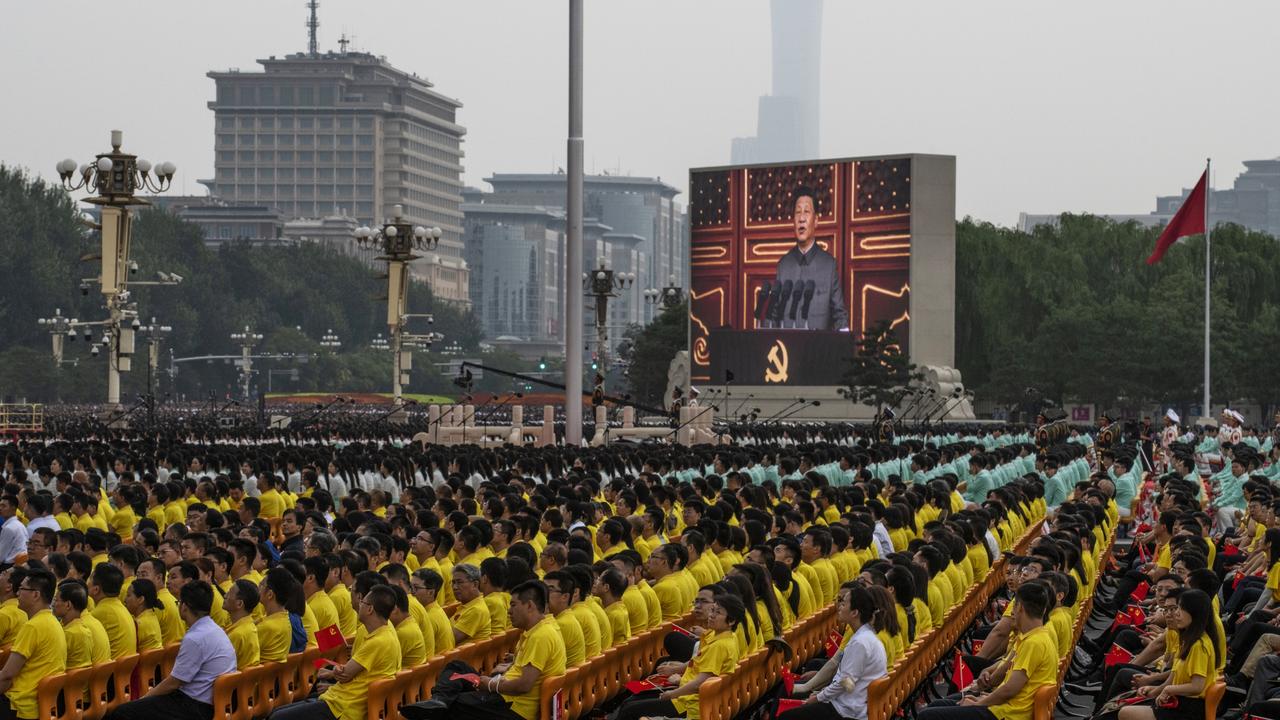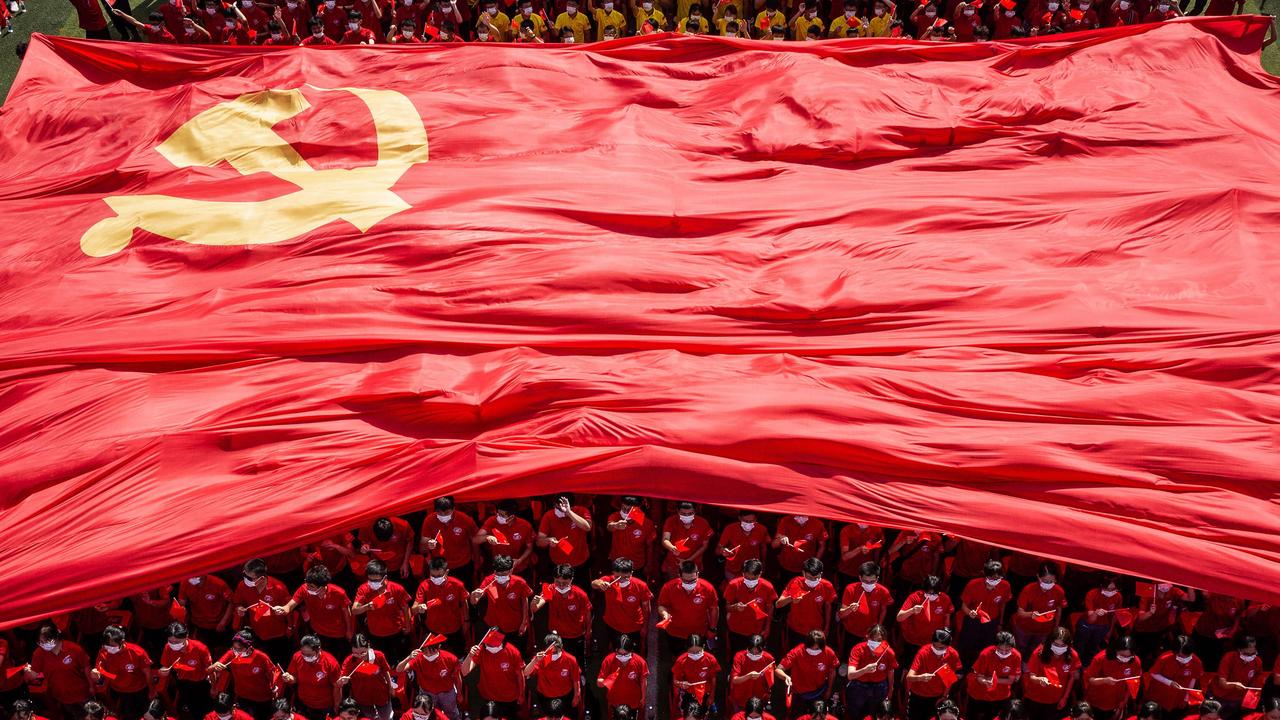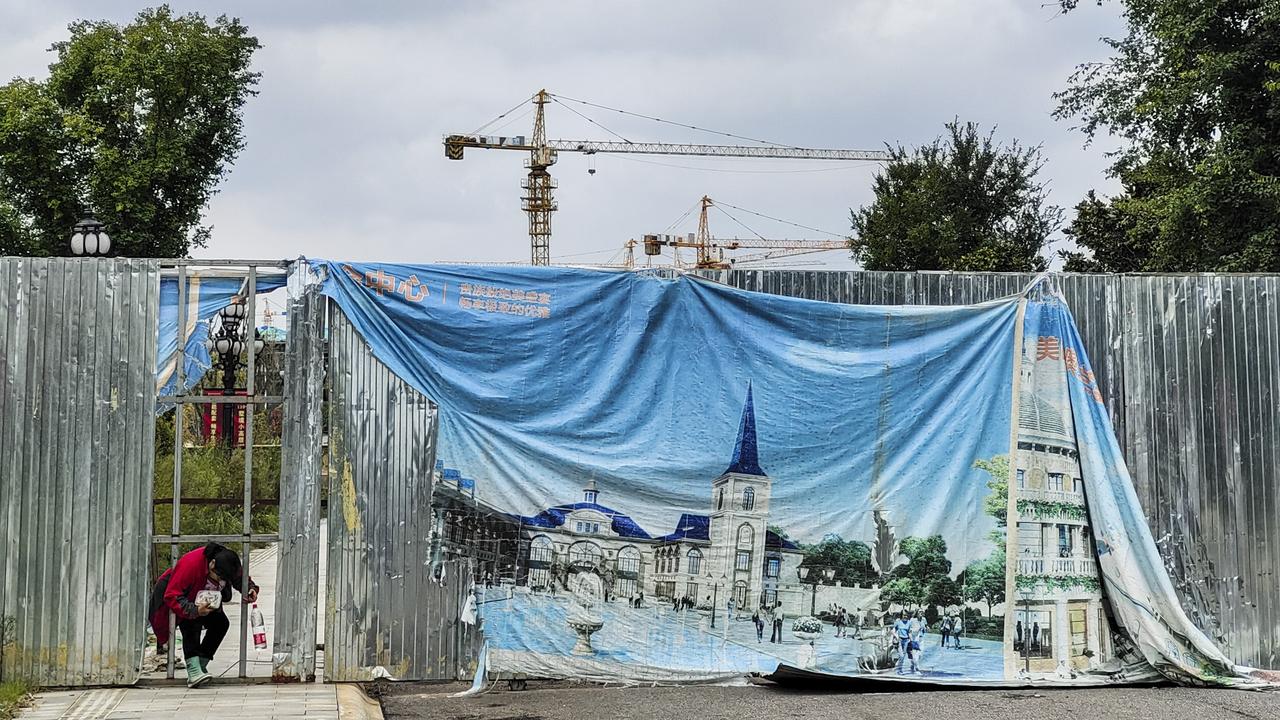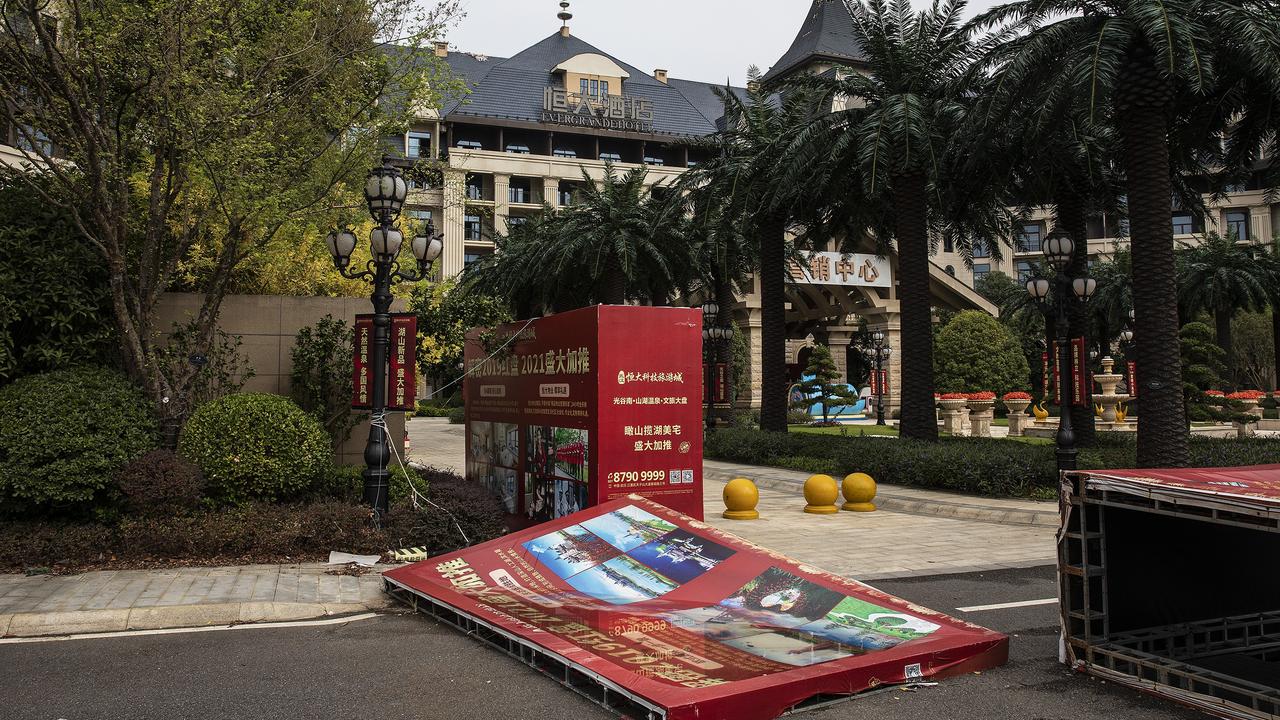China started first shot.
-
IP addresses are NOT logged in this forum so there's no point asking. Please note that this forum is full of homophobes, racists, lunatics, schizophrenics & absolute nut jobs with a smattering of geniuses, Chinese chauvinists, Moderate Muslims and last but not least a couple of "know-it-alls" constantly sprouting their dubious wisdom. If you believe that content generated by unsavory characters might cause you offense PLEASE LEAVE NOW! Sammyboy Admin and Staff are not responsible for your hurt feelings should you choose to read any of the content here. The OTHER forum is HERE so please stop asking.
You are using an out of date browser. It may not display this or other websites correctly.
You should upgrade or use an alternative browser.
You should upgrade or use an alternative browser.
China on its knees in war against Australia with a economy 1/10th its size and population 1/50th as many without firing a shot
- Thread starter syed putra
- Start date
China has its knees on Australia’s neck
The little known prediction of China’s collapse
A few years ago an expert casually predicted that China would fall just like other communist nations had. It could be coming true. Joe Hildebrand
Joe Hildebrand3 min read
October 23, 2021 - 6:12AM
389 comments
NEWS.COM.AU1:33Evergrande: Eerie "ghost towns" reveal scale of China's housing crisis |
Some truths take a long time to reveal themselves and a great and powerful truth might just be revealing itself to the world right about now. And one man predicted it a decade ago.
We are perhaps witnessing the final flailing death throes of communism.
It has now been three decades since the fall of the Berlin Wall and Francis Fukuyama’s famous declaration of the end of history — namely that the fantastical and fatal experiment of communism had failed and that liberal democracies were, for want of a better cliche, the new normal.
But one shining aberration continued. As grey authoritarian socialist blocs fell like tenpins at the end of last century, the most populous country on earth surged towards its current status as the planet’s presumptive superpower.
Now there are ominous signs that despite all these heroic assumptions, and the championing of its rise by experts and apparatchiks alike, it too is on the brink of collapse.
China, like the wall, may fall.

There are signs China — decades after the fall of communism in Europe — is itself on the brink of collapse. Picture: Kevin Frayer/Getty Images
Should this happen there will inevitably be a chorus line of historical revisionists who will claim that circumstances changed, political situations evolved or dark forces conspired.
After all, who could have possibly foreseen this devastating crash?
As it turns out, someone did.
In a podcast for BBC History Magazine in April 2012, the economist and political scientist
James A. Robinson casually predicted that China would fall just as certainly as the Soviet Union did — despite both being lauded by the left and feared by the right.
“In the early 1980s we were still being taught that if you really wanted to have successful economic growth you needed to have a Soviet command-style economy,” he said.
“And the Soviet Union, between 1928 when Stalin started pushing these five-year plans and the next 40 years, that was probably the most successful experience of economic growth in world history.

Chinese President Xi Jinping at celebrations in Beijing to mark the 100th founding anniversary of the Chinese Communist Party on July 1. Picture: Reuters
“The Soviet Union grew incredibly fast by taking millions of people in the countryside who
were basically doing nothing except growing potatoes and doing subsistence agriculture and sticking them in factories and this created enormous improvement in income per capita and it fooled everybody.
“It fooled economics professors, it fooled the CIA, it even fooled the Soviet leadership.”
Robinson, who co-authored the exhaustive socio-economic-political tome Why Nations Fail, said — at the time, mind you — that all the commentary about China at the beginning of this decade had all the hallmarks of the same delusions.
“It wasn’t sustainable. They could only get so far with that model,” he says of the fallen
USSR.
“Now it seems sort of laughable that people ever thought the Soviet Union had a kind of model for economic success. But lots of that heavily influenced people.
“It’s very similar the way you go back 30 years and the discussion now of China exactly
mirrors the discussion of the Soviet Union.”

Robinson believes China could follow the same fate as that of the former Soviet Union. Picture: Kevin Frayer/Getty Images
Asked by his interviewer if he was saying that Chinese growth would slow and it would not become the superpower everyone predicted, Robinson simply says: “Yeah.”
Most telling, he says, is the false notion that the Chinese Communist Party has been a great manager of the economy.
“It’s interesting the misconceptions about China. People think it’s the Chinese Communist Party that’s responsible (for economic growth).
“This has happened in spite of the Chinese Communist Party not because of the Chinese Communist Party. The economic growth in China has been caused by the Chinese Communist Party withdrawing from controlling every aspect of economic life.
“The first thing they did in 1978 was introduce incentives in agriculture. They sort of allowed people to start doing what they want and keep the income they got from doing what they want. And that led to enormous productivity in agriculture. And the same thing started happening with industry, they started relaxing controls.

Wuhan university students honour 100 years of the Communist Party at an event in September, 2021. Picture: STR / AFP
“This is not a triumph of the Communist Party, this is the Communist Party pulling itself out of society a little bit.”
Indeed. And now China is potentially on the brink of an economic crash because of CCP attempts to artificially prop up the property market.
In fact the problem runs even deeper, straight to the core of what it means to be a liberal democracy. If people are not free or politically empowered, Robinson says, it is impossible to harness their full economic potential and therefore states that do not allow their citizens freedom will inevitably fail. Those that rely on forced labour especially so.
“What makes a society prosperous is whether or not it’s organised to harness the talents of its people,” he says.
More Coverage
New pictures reveal scale of China crisis‘Doomsday’: China’s threat to tiny country“The talents, the energies, the ideas, the creativity of its people.”
It is a concept so simple, so commonsense, that any working man or woman would understand it instinctively. If only our intelligentsia were also so wise
Eerie photos of abandoned Evergrande developments expose extent of crisis facing China
Major development projects abandoned by Evergrande as the company teeters on the brink of ruin expose the sheer scale of China’s crisis. Alexis Carey
Alexis Carey@carey_alexis
3 min read
October 20, 2021 - 1:01PM
NEWS.COM.AU1:33Evergrande: Eerie "ghost towns" reveal scale of China's housing crisis |
New pictures of abandoned Evergrande building projects have revealed the devastating scale of the crisis engulfing not only the company, but China too.
The Chinese property behemoth started dominating global headlines in recent weeks after emerging as the worlds most indebted real estate firm, racking up staggering debts of $A408 billion.
The sheer magnitude of both the company itself and its potential downfall sparked concern it could become China’s “Lehman moment”, with experts fearing it could trigger a worldwide financial crisis and cause a contagion, ultimately dragging down other companies and sectors.
Now, new pictures have emerged with illustrate in shocking detail just how disastrous the Evergrande nightmare really is.
Wuhan abandoned
A series of new pictures of a stagnant construction site at the Evergrande Wuhan culture-oriented travel city shows how the company has simply upped and walked away from partially-completed projects as the crisis rages on.
It has simply added to China’s existing “ghost towns” problem though, with Mark Williams, chief Asia economist at Capital Economics, predicting the nation had around 30 million unsold properties, which could house 80 million people, according to CNN.
Capital Economics also predicts around 100 million properties, which could house 260 million people, have probably been purchased but yet remain unoccupied.
With Evergrande and other developers now facing potential collapse, there are rising fears China’s ghost town phenomenon will only accelerate further.
FROM NEWS.COM.AU
Horrifying new virus milestone Be on the news with daily email updates

A woman darts through a hole in a billboard at the abandoned Evergrande Wuhan culture-oriented travel city. Picture: Getty Images

Billboards blown down by the wind in Evergrande Wuhan culture-oriented travel city. Picture: Getty Images
More defaults likely
Just last week, China’s central bank stressed that Evergrande’s spillover risks on financial institutions were controllable.
“In recent years, the company has failed to manage its business well and to operate in accordance with market changes,” The People’s Bank of China head of financial markets Zou Lan said in a press briefing.
“Instead, it blindly diversified and expanded, resulting in serious deterioration of its operating and financial indicators, which eventually led to risks.”
However, he insisted that the risks posed by Evergrande when it comes to the wider financial system were minimal.
Meanwhile, the bank’s governor, Yi Gang, said at a virtual G30 meeting on Sunday that while Evergrande “casts a little bit of concern”, “overall, we can contain the Evergrande risk”.
On the surface, these comments seem like good news, with insiders reassuring the world that the crisis can be contained.
However, experts fear it was a deliberate attempt to downplay the problem, with Evergrande expected to default on two more payments due this week.
If those defaults come to pass, it will be yet another nail in the Evergrande coffin.

An aerial view shows the Evergrande Wuhan culture-oriented travel city. Picture: Getty Images
‘Frightening’ sign of things to come
In a recent, exclusive interview with the Institute for New Economic Thinking, high-profile US investment manager Jim Chanos offered an analysis of the China Evergrande crisis – but said he believed the political repercussions of the disaster could be even worse than the economic fallout.
“I think that the impact might be more political than financial. That’s what worries me,” he said.
“It’s the rise of bellicosity, the rise of a more militant China as the economy and the financial situation has gotten more precarious. That’s a 1930s kind of problem.
“We know that a rise in authoritarianism and statism around the world was one of the upshots of ‘29-’32. You had leaders saying, ‘I’m the one that can get us out of this problem’ and ‘They are the ones who got us here’. This situation in China is a little bit frightening to the student of history, because there’s no doubt, whether you’re flying over Taiwan airspace or coming close to ships in the South China Sea, that there’s a rise of tensions in and around China.
“I don’t think it’s a coincidence.”
Property sector in trouble
His comments comes as two major banks – UBS and Barclays – both warned this week that the Evergrande disaster was spreading and already slowing down China’s economy.
On Monday, UBS cut its 2021 growth forecast for China’s GDP from 8.2 per cent to 7.6 per cent and named Evergrande as one of the biggest calamities facing China, along with the nation’s power shortages.
“Both onshore and offshore bond markets remain effectively closed for [property] developers while sales, the main source of cash flow, are dropping,” UBS analysts, led by chief China economist Tao Wang, said in a note on Monday.
“We expect property new starts to decline by 20 per cent year-on-year in Q4 2021 and property investment decline by 5 per cent or more, bringing further downward pressure on the economy.”

Evergrande has walked away from unfinished projects. Picture: Getty Images

The company’s potential downfall has left investors in the lurch. Picture: Getty Images
Meanwhile, Barclays slashed its growth forecast for China’s GDP to 8 per cent, compared with an earlier prediction of 8.5 per cent.
More Coverage
Footage reveals massive problem for China‘Possible storm’: China braces for collapseThe bank’s analysts, including chief China economist Jian Chang, said there has been a “rapid deterioration of housing market sentiment as Evergrande financial difficulties spread to more developers in October”.
Those comments come after fellow real estate companies, such as Fantasia and Sinic Holdings, also aced debt problems recently, with some experts declaring it was a sign a contagion was in full swing.
Yea. But in doing so Australia is biting its balls.China has its knees on Australia’s neck
Really???? How come??China has its knees on Australia’s neck
Dramatic turn in China trade war as Australia fires back in scathing letter


Australia has fired back at China in a scathing new letter about its trade sanctions. Photo: Getty
 Matthew Elmas
Matthew ElmasSHARE
The trade war between China and Australia has taken a dramatic turn, with Canberra using a routine World Trade Organisation review to slam the world’s most populous nation for “undermining” global trade rules with “arbitrary” sanctions.
In a scathing letter published on Wednesday night (AEDT), Australia said China’s crushing trade restrictions were inconsistent with its pledge to open up to unrestricted global trade over the past two decades.
The letter shows Australia is ratcheting up pressure on China through the WTO, but experts said the move is unlikely to influence Chinese policymaking.
“Over the past 18 months, China has increasingly implemented trade disruptive measures targeting a wide range of Australian products,” reads the letter published by Australia’s WTO ambassador George Mina.
“These include increased and arbitrary border testing and inspections; unwarranted delays in listing and re-listing export establishments, issuing import licences and other restrictions.
“Such measures have severely limited or ended Australia’s trade with China across more than a dozen commodities.”
Australia loses billions to trade war
The Australian economy has lost billions of dollars of exports to China after the nation slapped restrictions on barley, coal, cotton, hay, logs, meat, rock lobsters and wine in response to a list of 14 grievances with Canberra.They include Australia’s criticism of China’s human rights record, Canberra’s call for an independent investigation into the origins of COVID-19, and the decision to ban China-owned telecommunications giant Huawei from Australia’s 5G rollout.
But because Australia’s largest export to China – iron ore – was not restricted, trade surpluses with China have actually increased over the past 18 months.
But that is now changing as China’s demand for iron ore has fallen over the past three months.
The price of iron ore has fallen from more than $US213 ($289) a tonne to less than $US125 ($165) over that time frame, as China has cracked down on steel mill production to reduce carbon emissions.
It means China’s trade restrictions are now having a larger effect on the Australian economy as iron ore exports are struggling to offset falls in other categories.
One silver lining is that China has started letting Australian coal ships into the country, amid a global shortage of the commodity that has seen prices hit record highs.
But coal is a much smaller export category than iron ore and is still being hit with trade restrictions.
Australia ratchets up pressure
Against this backdrop, the Australian government is trying to ratchet up pressure on China to reverse its restrictions through the WTO’s appeal process.The latest letter during a routine review of China’s trade policies at the WTO was an unusual escalation of tensions as such reviews are usually uncontroversial.
The meetings normally cover technical details about trade and relations with key partners.
University of New South Wales law professor Heng Wang said the trade reviews typically don’t cover disputes.
“The WTO dispute settlement is supposed to address trade disputes if a member is not happy with the situation,” Professor Wang told The New Daily.
But Australia turned up the temperature a notch with its scathing letter.
“There are credible reports that Chinese authorities have instructed importers not to purchase certain Australian products, contrary to WTO rules,” Australia’s letter read.
“By undermining agreed trade rules China also undermines the multilateral trading system on which all WTO members rely,” it said.
Last month, the WTO responded to Australia’s complaints by establishing a panel to consider China’s import restrictions.
The disputes were listed on the WTO’s dispute resolution agenda earlier this week, but the organisation is yet to set a date for delivering its verdict.
Melbourne Law School professor Tania Voon said efforts to take China to task at the WTO have a good chance of being successful.
“The dispute settlement system is an effective way of bringing them into conformity,” Professor Voon told The New Daily.
“Unsuccessful respondents usually do so, even if it sometimes takes a long time.”
But both Professor Voon and Professor Wang said the WTO’s appeals process can also be dysfunctional.
“The WTO dispute settlement system does face challenges,” Professor Wang said.
“The WTO rules have not been upgraded to address new issues in trade practices … it is not easy to address the Australia-China trade tension.”
It’s Death by a Thousand Cuts for China Right Now
By Glenn Dyer | More Articles by Glenn Dyer
It is already apparent that China faces extra pressure in the current quarter which will further drag down GDP growth for all of 2021 and heading into 2022.
The extra pressures are all homegrown and no amount of blaming external forces – the US, Europe, Taiwan and even Australia – can hide the fact that it’s going to get rougher for the economy before it gets better.
The government has a 2021 GDP estimate of around 6%, western economists say it could be around 8% and dipping to 5% next year.
But such are the problems and the potential for trouble in property and output that the chances of reaching the 8% estimate are looking remote and the 6% could become a struggle if there’s a cold winter.
The past week has seen a worrying outbreak of new Covid Delta infections across the country – small figures, but the outbreaks keep happening and Mongolia, just to the northwest, and beyond that, Russia, are seeing continuing infections.
Apart from the continuing flares of Covid most of the pressures will flow from the conjunction of a number of factors – power shortages and rationing, the property crunch (signified by Evergrande’s battle to survive), weak demand, lower output by key industries such as steel and cement, the badly timed carbon emissions reduction campaign and the government’s crackdown on companies and sectors in the name of the new “Moderate Prosperity” mantra.
“Growth will slow further,” said Louis Kuijs of Oxford Economics in a report after this week’s weak GDP figures were released.
He said “ugly growth numbers” in coming months are likely to prompt Beijing to ease lending controls and try to prop up activity by encouraging infrastructure development.
Complicating matters are two events in early 2022 – the Winter Olympics in February – no foreigners allowed because of Covid and there may be restrictions on locals attending given the continuing outbreaks of Covid across China (and in Mongolia next door).
President Xi wants the area looking nice around Beijing, smog free as possible and little fallout, so steel and other heavy emitters have been told to cut production for the first 10 weeks of 2022. That will come at a cost of lower production for the next four or five months.
Then there’s the twice a decade meeting next year of the Party Congress at which President Xi will be looking for a third term. While many analysts claim he has made himself President for Life, he merely had the two-term limit removed and still needs the Party to give him a third term.
The Communist Party’s elite convenes for the first time in more than a year next, laying the ground for the party congress in 2022 that could extend Xi Jinping’s term as leader.
The Communist Party’s Central Committee will see about 400 state leaders, ministers, military chiefs, provincial bosses and top academics for the better part of a week. It will set the work plan for the government (including the targets for GDP, production and inflation) and set in train the planning for the Congress.
Normally it’s a lock that someone as powerful as Xi gets a third term, but with the current economic unease, power blackouts, slowing growth and missteps trying to control the future of stricken property giant, China Evergrande, the outlook for the economy isn’t encouraging.
Xi reportedly hasn’t left Beijing since the start of the pandemic and hasn’t left China for the sort of state visits he likes to take to reassert China’s influence.
Covid cases are continuing and sparking mini lockdowns and restriction. As well, if it’s not power shortages, its soaring commodity prices such as coal which the government moved this week to bring down, after allowing them to rise and fall more freely just a week ago.
The crackdown on carbon emissions continues, though in a more flexible fashion and after the damage it did to the economy and growth in the three months to December, the next two quarters are not looking as solid as they might have done a year ago.
The economy only grew 0.2% in the September quarter from June which gave a truer picture of the health of the economy than the 4.9% annual rate (which was down from 7.9%).
Construction, an industry that supports millions of jobs, has slowed since regulators tightened control last year over borrowing by developers.
Production of construction related industries – such as cement and crude steel – plunged in September, down by 13% yoy and 21.2% yoy respectively.
There was also a sizeable fall in motor vehicle output, which fell by 13.7% yoy – albeit this could be related to the global shortages of semi-conductors.
In contrast, output of electronics rose by 9.5% yoy.
Manufacturing has been depressed by power cuts imposed by some major provinces to avoid exceeding official efficiency goals.
Factory output barely grew in September, expanding by only 0.05% compared with August. That was down from the 7.3% growth for the first nine months of the year.
Capacity utilisation rates at 71 electric arc furnaces across China have been falling since late August and slipped to 49.22% in the last week of September, down 21.09% from same period year earlier, data compiled by the Mysteel website showed last week.
Production at long-process steel plants is also cut by the efforts to reduce smog and carbon emissions and the pledge that 2021 production cannot exceed last year’s record 1.065 billion tonnes.
While China produced 805.89 million tonnes of steel in the first 9 months of the year up 2% on an annual basis, the growth rate was a fraction of the 12% rate at the end of June.
And there is no prospect for any recovery for months to come.
China’s industry and environment ministries last week issued a joint statement last week urging more mills in northern China to keep to those 2021 cuts from November 15 to the end of 2021.
And from January 1, 2022, to March 15 mills must cut output by at least 30% of their 2021 production to reduce air pollution. That applies to mills in the 28 major steel producing cities across northern China.
Coal output in China was 334.1 million tonnes in September, down from 335.24 million tonnes in August and 0.9% lower from a year earlier, data from the National Bureau of Statistics (NBS) data showed.
The National Energy Administration (NEA) last week said current daily output has climbed to more than 11.2 million tonnes, underscoring the slow pace of bringing meaningful supplies to market.
“The Chinese government is losing the battle to control soaring coal prices,” said Alex Whitworth, head of Asia Pacific Power and Renewables Research at Wood Mackenzie.
“Despite efforts to increase coal supply, output fell in September due to weather, safety and logistics challenges. Neither has China succeeded in reining in booming power demand”.
But so far in October, there has been a small recovery – the target is to produce 12 million tonnes a day which the government reckons will be enough to keep power plants running and the lights on.
China’s top economic planning group, the National Development and Reform Commission (NDRC), said this week it was studying ways of intervening to lower coal prices and would take all necessary steps to bring them into a reasonable range.
That threat has seen prices fall by between $US30 and $US50 a tonne in futures markets in China and elsewhere in Asia, such as at Newcastle in Australia.
The NDRC had said it would ensure coal mines operate at full capacity and aim to raise output to at least 12 million tonnes per day.
It put the daily production rate at a 2021 high of over 11.6 million tonnes as of October 18, up more than 1.2 million tonnes from late September after an all-out effort to boost supply that has included approvals for new coal mines.
Reuters says that some major coal miners have vowed to cap prices, and China’s energy administration has urged power grid firms to maximise purchases of electricity from renewable sources to help bolster power supplies.
China’s State Grid said in a statement on Wednesday that coal stocks at power plants in the northeast had climbed to 78% of last year’s level as of Oct 16, but did not provide outright volumes.
The three northeastern provinces of Jilin, Heilongjiang and Liaoning – were among the worst hit by the power shortages last month.
Several regions in northern China, including Inner Mongolia and Gansu, have already started winter heating, which is mainly fuelled by coal, to cope with the colder-than-normal weather.
Late October temperatures in central and eastern regions are expected to be “significantly lower than normal,” the National Meteorological Centre forecast on Thursday, adding that temperatures in some western and southern regions of the country will fall by 4 to 10 degrees Celsius within the next day or so.
The push to boost coal production and power production from thermal coal and gas means China has abandoned its pretence of having a policy designed to lower carbon emissions, at least for the coming winter.
…………
Chinese state media reported late on Friday that Evergrande would repay a missed a $A112 million interest payment on a dollar-bond, just two days ahead of a deadline that would have forced a formal default.
The payment was reported by the state-controlled Securities Times which said the real estate group would send $US83.5 million in interest to its trustee, Citibank, on Friday, paying investors before the grace period expires on midnight, Saturday, New York Times -around midday Sunday.
There was no explanation as to where the money came from and why it was repaid now, 29 days into a 30-day grace period when repaying it before September 23 would have given greater reassurance.
It still has two dollar-bond coupon payments to make by November 11.
Evergrande did not confirm the payment.
The paper reported that another developer, Kaisa, will pay interest on the bond on Friday.
Wokism will destroy USACommunism may fall in China but it is gaining strength in America.
Sad but true,,,however the yanks are fighting back,,,,unlike the chicons who have huge support from the overseas chinese like singkie fuckeins chicon plps...and the biggest joke is these chicon plps are 2nd or 3rd gen singkies/mudlanders who never even step foot on Chicon land at all,,,and I thought the mudslimes were badCommunism may fall in China but it is gaining strength in America.
Last edited:
I suppose china will have to pay for the cost of ship being held up in ports waiting to discharge their cargo.
Go fuck yrslf.The little known prediction of China’s collapse
A few years ago an expert casually predicted that China would fall just like other communist nations had. It could be coming true.
Joe Hildebrand
3 min read
October 23, 2021 - 6:12AM
389 comments
NEWS.COM.AU1:33
Evergrande: Eerie "ghost towns" reveal scale of China's housing crisis
Some truths take a long time to reveal themselves and a great and powerful truth might just be revealing itself to the world right about now. And one man predicted it a decade ago.
We are perhaps witnessing the final flailing death throes of communism.
It has now been three decades since the fall of the Berlin Wall and Francis Fukuyama’s famous declaration of the end of history — namely that the fantastical and fatal experiment of communism had failed and that liberal democracies were, for want of a better cliche, the new normal.
But one shining aberration continued. As grey authoritarian socialist blocs fell like tenpins at the end of last century, the most populous country on earth surged towards its current status as the planet’s presumptive superpower.
Now there are ominous signs that despite all these heroic assumptions, and the championing of its rise by experts and apparatchiks alike, it too is on the brink of collapse.
China, like the wall, may fall.

There are signs China — decades after the fall of communism in Europe — is itself on the brink of collapse. Picture: Kevin Frayer/Getty Images
Should this happen there will inevitably be a chorus line of historical revisionists who will claim that circumstances changed, political situations evolved or dark forces conspired.
After all, who could have possibly foreseen this devastating crash?
As it turns out, someone did.
In a podcast for BBC History Magazine in April 2012, the economist and political scientist
James A. Robinson casually predicted that China would fall just as certainly as the Soviet Union did — despite both being lauded by the left and feared by the right.
“In the early 1980s we were still being taught that if you really wanted to have successful economic growth you needed to have a Soviet command-style economy,” he said.
“And the Soviet Union, between 1928 when Stalin started pushing these five-year plans and the next 40 years, that was probably the most successful experience of economic growth in world history.

Chinese President Xi Jinping at celebrations in Beijing to mark the 100th founding anniversary of the Chinese Communist Party on July 1. Picture: Reuters
“The Soviet Union grew incredibly fast by taking millions of people in the countryside who
were basically doing nothing except growing potatoes and doing subsistence agriculture and sticking them in factories and this created enormous improvement in income per capita and it fooled everybody.
“It fooled economics professors, it fooled the CIA, it even fooled the Soviet leadership.”
Robinson, who co-authored the exhaustive socio-economic-political tome Why Nations Fail, said — at the time, mind you — that all the commentary about China at the beginning of this decade had all the hallmarks of the same delusions.
“It wasn’t sustainable. They could only get so far with that model,” he says of the fallen
USSR.
“Now it seems sort of laughable that people ever thought the Soviet Union had a kind of model for economic success. But lots of that heavily influenced people.
“It’s very similar the way you go back 30 years and the discussion now of China exactly
mirrors the discussion of the Soviet Union.”

Robinson believes China could follow the same fate as that of the former Soviet Union. Picture: Kevin Frayer/Getty Images
Asked by his interviewer if he was saying that Chinese growth would slow and it would not become the superpower everyone predicted, Robinson simply says: “Yeah.”
Most telling, he says, is the false notion that the Chinese Communist Party has been a great manager of the economy.
“It’s interesting the misconceptions about China. People think it’s the Chinese Communist Party that’s responsible (for economic growth).
“This has happened in spite of the Chinese Communist Party not because of the Chinese Communist Party. The economic growth in China has been caused by the Chinese Communist Party withdrawing from controlling every aspect of economic life.
“The first thing they did in 1978 was introduce incentives in agriculture. They sort of allowed people to start doing what they want and keep the income they got from doing what they want. And that led to enormous productivity in agriculture. And the same thing started happening with industry, they started relaxing controls.

Wuhan university students honour 100 years of the Communist Party at an event in September, 2021. Picture: STR / AFP
“This is not a triumph of the Communist Party, this is the Communist Party pulling itself out of society a little bit.”
Indeed. And now China is potentially on the brink of an economic crash because of CCP attempts to artificially prop up the property market.
In fact the problem runs even deeper, straight to the core of what it means to be a liberal democracy. If people are not free or politically empowered, Robinson says, it is impossible to harness their full economic potential and therefore states that do not allow their citizens freedom will inevitably fail. Those that rely on forced labour especially so.
“What makes a society prosperous is whether or not it’s organised to harness the talents of its people,” he says.
More Coverage
New pictures reveal scale of China crisis‘Doomsday’: China’s threat to tiny country
“The talents, the energies, the ideas, the creativity of its people.”
It is a concept so simple, so commonsense, that any working man or woman would understand it instinctively. If only our intelligentsia were also so wise
Go fuck yrslf... cheapsake paid by CIA
It may seems like communism but capitalist ideals too entrenched. The most the socialist can do is to tax the rich disproportionately higher.Communism may fall in China but it is gaining strength in America.
Most of those which gave up US citizenship were due to excessive control of its citizens from barring them to deal with so called say Iranians or China to taxation imposed for incomes earned outside of US.
Similar threads
- Replies
- 0
- Views
- 370
- Replies
- 0
- Views
- 488
- Replies
- 1
- Views
- 498
- Replies
- 6
- Views
- 594

